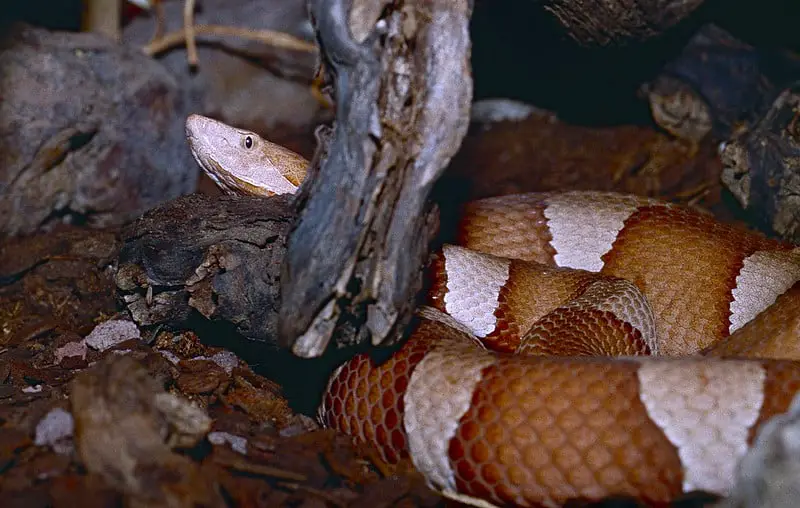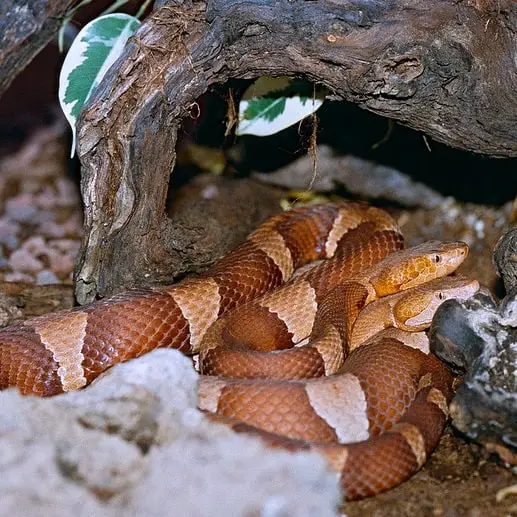The broad-banded or Texas copperhead snake, Agkistrodon laticinctus, is a venomous snake that can be found in the Southeastern United States in Texas, Kansas and Oklahoma. It was formerly considered a subspecies of the copperhead snake (Agkistrodon contortrix) but is now recognized as an own species. The body of the broad-banded copperhead snake is a light brown with several broad dark brown crossbands.
Description
The broad-banded copperhead usually has a light brown basic body coloration with several broad-banded dark brown crossbands. It looks very similar to its close relative, the copperhead. The crossbands of the broad-banded copperhead are usually straight bands around the upper side of the body while the copperhead has irregularly shaped crossbands.

The bottom side of the body of the broad-banded copperhead is mostly white and the crossbands don’t go all the way around the body. The corssbands of the copperhead snake usually go all the way around the body. This would be a way to distinguish the two species but we don’t recommend turning the snake around if you run into it in the forest.
Size
An adult broad-banded copperhead is usually around 2-3 feet (60-90 cm) long. Males are generally longer than females.
Hunting Behavior
The diet of the broad banded copperhead ranges from small mammals such as mice and rats, to birds, reptiles, amphibians and insects. The tail tip of younger snakes is often colored in green or blue colors. The young snakes use it as a worm imitation to lure small reptiles or mammals close enough for a deadly bite.

Bite
The venom of the broad-banded copperhead is similar to the venom of the normal copperhead snake. It is a haemotoxin of medium strength. A bite can be very painful but usually not fatal for an adult. Symptoms range from local pain to nausea and vomiting.
In contrast to many other snakes, the broad-banded copperhead usually doesn’t run off if a larger threat (such as humans) approach it. Its defense mechanism is to freeze and wait for the threat to pass. Due to its perfect camouflage, they are very hard to spot on the forest ground. Therefore, bites often happen when humans accidentally step on the snake.
Habitat
Broad-banded copperhead snakes inhabit the forest and desert areas of Northwestern Texas up to Southern Kansas and Oklahoma.
Broad-Banded copperhead range in the USA
The broad-banded copperhead snake can be found in Northwestern Texas, Southern Kansas and Southern Oklahoma.
Scientific classification of Agkistrodon laticinctus
- Kingdom: Animalia
- Phylum: Chordata
- Class: Reptilia
- Order: Squamata
- Suborder: Serpentes
- Family: Viperidae
- Genus: Agkistrodon
- Species: Agkistrodon laticinctus
Other common names
Other common names of the broad-banded copperhead are Texas copperhead, copperhead moccasin, highland or dry-land moccasin, moccasin, red eye, thunder snake, and WiFi snake. It is sometimes also just referred to as copperhead snake.